
Prevent and Treat Sour Crop or Impacted Crop
Sour crop or an impacted crop is a common problem for backyard chicken flocks. Knowing how to prevent and treat these ailments could save a chicken’s life. As always, preventing the problem is better than having to treat it.
I recently had a hen that developed sour crop and I successfully treated the infection and saved her life. Now I can’t even tell which hen was sick. To prevent crop problems from claiming the life of one of your chickens, I’ve compiled the information you need to prevent and treat sour crop and impacted crops in your flock.
This post contains affiliate and referral links and advertising as a means to earn income. You won’t pay any extra but I may earn a small commission on qualifying purchases. As an Amazon affiliate, I may earn a commission on qualifying purchases. See my disclosures.

What are Sour Crop and Impacted Crops?
First, we need to understand what the crop is and how it functions. Birds have a sack-like organ at the base of the esophagus that stores food and grit until it moves through the gizzard. This organ is called the crop and it allows chickens to consume and store more food than they can digest right away.
Several problems can affect this organ including injury from ingesting a sharp object, impacted crop, or sour crop.
Prevent injury from sharp objects by picking up garbage, sweeping the coop and pen with a metal detector for nails, etc.
An impacted crop is caused when chickens eat long strands of grass or hay or other materials that will not pass readily through their gizzard.
Sour crop is a fungal infection caused by candida yeast (Candidiasis, also known as Thrush) of the crop. This yeast is usually present in a chicken’s body but it becomes problematic when beneficial bacteria are eliminated or the digestive process slows. A slowed or blocked digestive system can lead to the fermentation of food and the growth of this yeast, causing sour crop.
Check out my ebook How to Keep Backyard Chickens for Farm Fresh Eggs: Getting Started with Laying Hens. Click Here to Save 15% on All of My Chicken Products on Etsy!
You might also like my Egg Tracker Freebie for a free printable egg production tracking sheet!

What Causes Sour Crop?
A life-threatening candida infection can be caused by any (or a combination of) the following problems:
- Impacted crop
- Pendulous crop
- Slow or blocked digestion due to worms, tumors, Marek’s disease, or egg peritonitis
- Rancid or moldy food
- Anti-bacterial use
Impacted Crop
Chickens sometimes ingest long strands of grass or hay, wood chips, string, and other objects that don’t pass readily through their digestive system. This can block their crop or gizzard and prevent food from passing through. Fermentation of the food in the crop can lead to the growth of yeast, causing a sour crop.
Pendulous Crop
Sometimes the muscles surrounding the crop stretch out and lose their ability to hold the crop in place. This can happen if your chicken consumes too much food or if their crop becomes impacted, especially when this occurs repeatedly.
Because the crop is not well supported, it hangs lower than the entrance to the stomach and gizzard and is never completely emptied of food. When food sits in the crop too long a yeast infection is likely.
Slow or Blocked Digestion
There are other conditions that can slow down or block the digestive system. A severe worm load can block the digestive system. So can egg peritonitis which is a serious and often fatal e. coli infection of the reproductive system. Tumors from Marek’s disease can also put pressure on the digestive system.
Worms may be successfully treated with a de-wormer, but both egg peritonitis and Marek’s are usually fatal and the bird should be put down to prevent further suffering.
Rancid or Moldy Food
It should go without saying that you should never give your flock any food that is moldy or rancid. Feeding rotten food can introduce harmful yeasts, bacteria, and toxins that can be fatal to your chickens.
Antibacterial Use
If your flock has been treated with antibiotics they are at increased risk of developing sour crop. Antibiotics kill the beneficial bacteria in a chicken’s digestive system, allowing the candida yeast to grow unchecked.
After treating your flock with antibiotics, be sure to give them probiotics or plain yogurt to help repopulate the digestive system with the beneficial microflora they need to properly digest their food.

How to Prevent Diseases of the Crop
There are a number of preventative measures to reduce the likelihood of sour crop or an impacted crop in your chickens.
- Mow the area where chickens forage
- Remove strings, twine, etc that they may ingest
- Check for a full crop in the morning
- Provide pro-biotics in food or water
- Feed often or keep food available during daytime
- Keep water clean and never give moldy or rancid food
- Always keep crushed granite grit available for your flock
- Use a ‘crop-bra’ for chickens with pendulous crop
- Prevent and check for worm infestations regularly
Prevent Chickens from Ingesting Long Grasses or Strings
By mowing the area where your flock forages, they will be less likely to consume long pieces of grass. Also make sure that strings, twine, and other objects are cleaned up from their coop and pen. If your chickens like to eat the hay or straw bedding, switch to sawdust or pine shavings.
By preventing your flock from eating these items you’ll be reducing their chance of getting impacted crops.
Check for Flock Health & Full Crops Every Morning
Spend a few minutes in the morning checking for flock health. Watch for chickens that appear listless, apathetic, or quieter than normal. If they have a full crop in the morning before they’ve had any food, check for an impacted crop or sour crop. (See how to check for these issues, below.)
Probiotics, Grit, Clean Water, & Free Choice Feed
Add probiotics, plain (unsweetened) yogurt, or real apple cider vinegar (with ‘mother’) to their food or water on a regular basis to keep their digestive system healthy.
Keep feed available during the day or feed your flock often so that they are not gorging at mealtime. When your birds are underfed or fed infrequently or irregularly they will consume as much food as possible when it’s available. Over-eating can lead to problems with a pendulous crop. (You can try a ‘crop bra,’ which is a fitted vest that prevents food from settling in the crop and fermenting.)
In addition, chickens will try to obtain the nutrition they need from somewhere and underfeeding may encourage them to eat strands of straw or other items that cause impacted crops.
Change their water often and check food for mold or a rancid scent.
Make sure your flock always has access to grit to help them break down their food as it passes through the gizzard.
Give your flock pumpkin seeds, fresh herbs, garlic powder, and cayenne pepper to help prevent worm infestations. Check their droppings regularly for parasites and de-worm them promptly when problems are detected.

How to Recognize Sour Crop & Impacted Crop
Chickens will normally have an empty crop first thing in the morning. Allow them free choice feed during the day, but remove any excess food at night. This way it is much easier to tell if they have an impacted crop or sour crop.
When you first go out to the coop in the morning, watch for chickens that appear listless or are hiding in a corner. They should all come running for their first meal. Do all members of the flock have an empty crop? Here’s how to tell:
- Visually inspect – does it look like they have just eaten, even when they haven’t?
- Physically inspect – if a bird looks like it has just eaten, pick it up and feel the crop. Does it feel full?
If any members of the flock look like they have already eaten and have a full crop, or act dull or listless, you’ll need to inspect more closely.
Pick up the bird and hold it under one arm with the head pointing forward. Gently stroke the neck and chest.
Check to see if the crop feels full as if the chicken has just eaten a full meal.
Does it feel very hard and full or does it feel soft and mushy?
If the crop feels hard and full, the chicken may have an impacted crop and you will need to treat your chicken.
If it feels soft and mushy it may have sour crop. As you gently massage the crop, do you smell a foul odor coming from the bird’s beak? This is a tell-tale sign of a sour crop and you will need to treat the sick chicken.
In some cases, the affected bird may have both an impacted crop and sour crop.

How to Treat Sour Crop or an Impacted Crop
If you find that one of your chickens has an impacted crop or sour crop remove it from the flock to treat it. It is best to have a quiet room or enclosure for your ‘hospital wing’ away from the rest of your birds. Follow these steps to treat your sick hen.
- Make sure that the cage or enclosure is clean and free of bedding.
- Sanitize a water dish and give the sick bird clean water with probiotics or apple cider vinegar (with the ‘mother’) and some crushed garlic or garlic powder mixed in.
- Do not give the chicken any feed at this point.
- Give the bird a good-sized dish of crushed granite grit to aid in breaking down the impacted materials in its crop and gizzard.
- Gently massage the hen’s crop, if it is impacted, to help move food through the digestive system. Do this several times a day.
- Check on the sick bird often and feel its crop to see if there is any change in the size or fullness of the crop.
- After 24 to 48 hours, if an impacted crop shows no improvement, you may need to take the chicken to a bird vet or attempt a further intervention on your own.
- If the crop feels empty after 12 hours with no feed, you may give the chicken plain, unsweetened yogurt along with clean water with probiotics or apple cider vinegar and garlic.
- After symptoms improve, keep the bird separated and continue feeding plain yogurt and giving garlic water for several days.
- When the hen no longer shows any symptoms of an impacted crop or sour crop you may return her to the flock by first placing the cage in their sight, then allowing her back out first thing in the morning.
- Keep an eye on your chicken for any relapses.
When to Take Drastic Action
It can be difficult to know when you should take more drastic action to save a chicken. If the bird is your pet and you can afford to take it to a veterinarian, by all means, have it treated!
If you keep chickens as livestock and unproductive members of the flock are butchered, then you are unlikely to take it to a veterinarian. In this case, you can try some additional methods to treat your hen before making the decision to put her down.
Some chicken keepers recommend giving your hen (with an impacted crop) mineral oil or vegetable oil to help lubricate the materials that are blocking or slowing the digestive process. However, liquid oil can coat the lungs and cause the hen to aspirate, or drown, in the liquid. If you wish to try oil, I suggest using a solid bit of coconut oil that is less likely to drip down the trachea into the lungs.
Draining Sour Crop?
You may also see directions for treating a hen with sour crop by turning her upside down so that the sour liquid drains out of her beak. This is definitely the last thing to try if you can’t help her any other way. Doing this can also cause liquid to get into her lungs, causing her to aspirate.
Before taking such drastic action, try all of the other instructions for treating her with probiotics and garlic for several days first. Draining the liquid from her crop is something I would undertake only if the food or liquid is actually backing up enough to come out of the beak. In that case, the chance of aspiration is already a danger.
Surgery for Impacted Crop?
Finally, if an impacted crop is not loosening up and allowing food to pass into the digestive system after a day or two, the chicken is in danger of dying from dehydration. I have never attempted surgery at home, but it may be the only thing to save the hen.
To perform this potentially life-saving surgery, begin by thoroughly cleansing the skin over the crop with an antibacterial such as Vetericyn. Next, use a very sharp knife or scalpel to make a 1″ incision through just the skin over the crop. Move the skin slightly to one side and make a 1″ incision through the wall of the crop so that the two incisions do not line up (for best healing). Use sterile forceps or tweezers to remove the materials causing the impacted crop.
Spray the incision once again with Vetericyn and place the hen in a clean cage removed from the rest of the flock. Allow water with apple cider vinegar for the first day then give her plain yogurt and begin feeding her small amounts of food after a day or two. Keep free-choice grit available at all times.
While your bird is recovering from the incision, keep the cage clean to prevent infection.
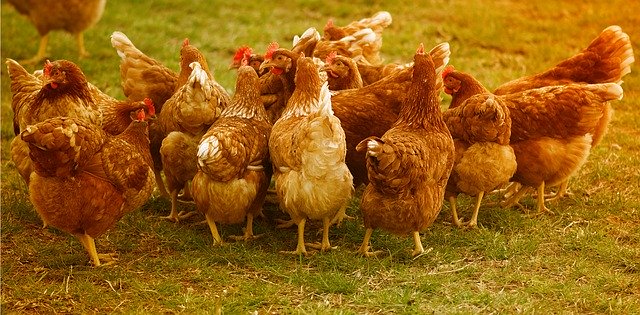
Keep Your Flock Safe from Crop Diseases!
Keeping your chickens healthy is obviously the goal of every backyard bird enthusiast. For the best results spend time with your birds every day to watch for any signs of illness, lethargy, or a full crop first thing in the morning. Be sure to inspect any bird that doesn’t appear normal and don’t let problems go unattended.
An impacted crop or sour crop may be treatable when detected early. The longer the problem goes undiagnosed the more difficult it is to help your hens.
Of course, preventing these problems in your flock is preferable to treating sick chickens. So pay attention to the quality of the food, the cleanliness of their water, and their normal behavior. Be sure to keep grit available at all times and remove bedding if they seem to be eating it and having a problem.
Have you ever had a chicken with sour crop or an impacted crop? How did you treat it? Leave a comment!
Learn How to Care for Sick Baby Chicks!


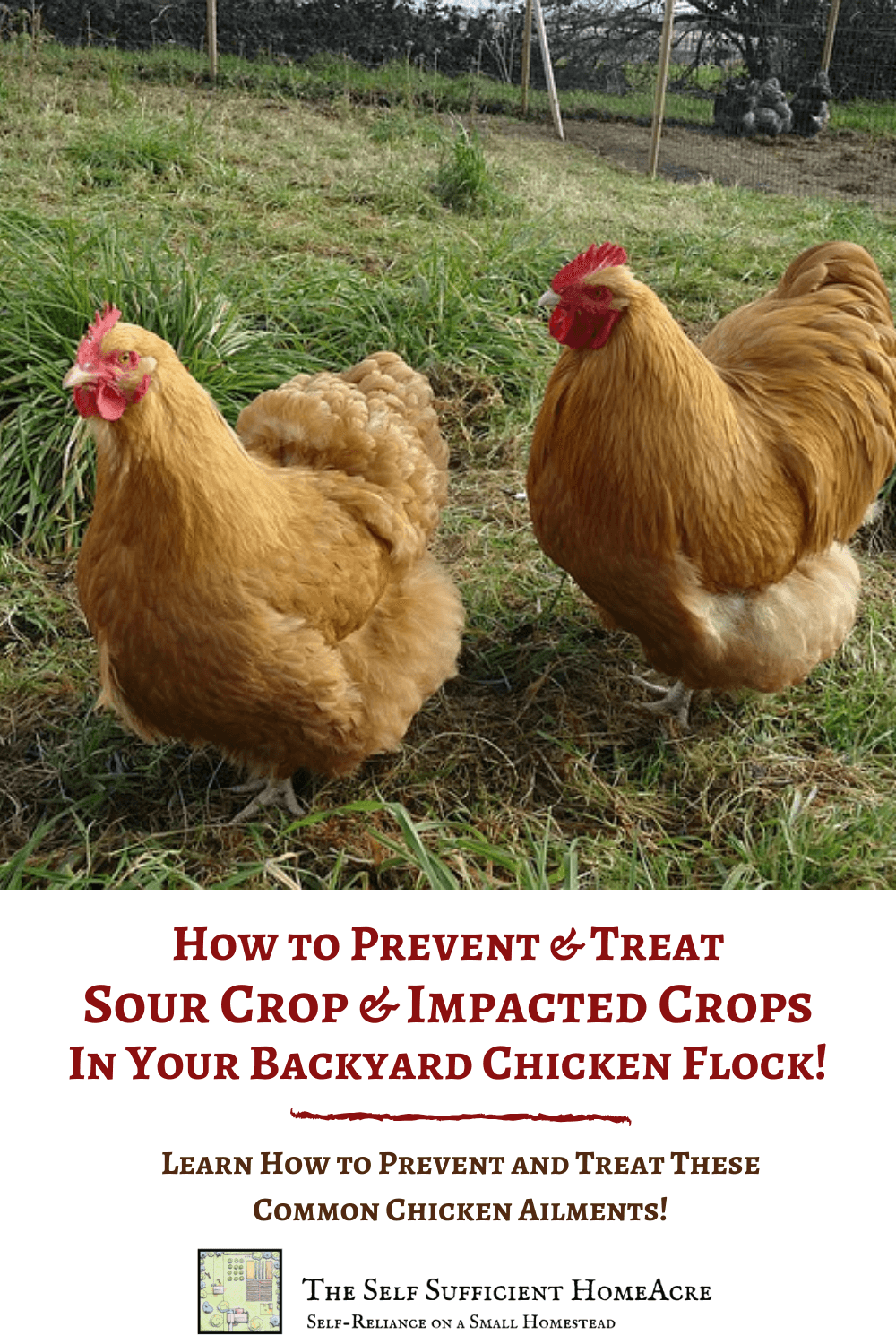

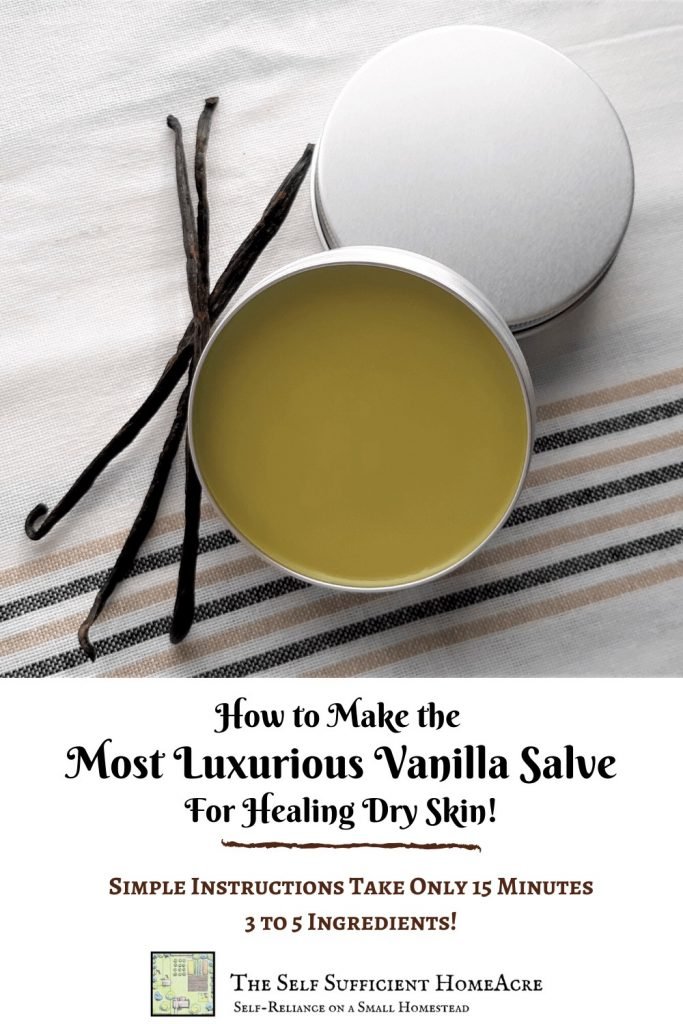
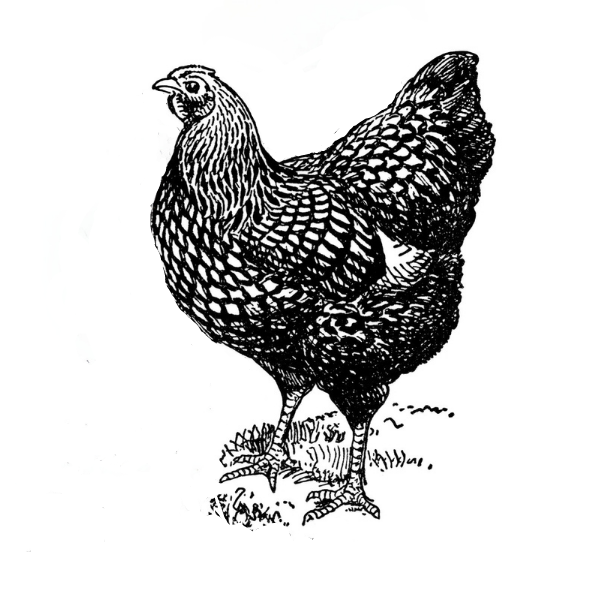

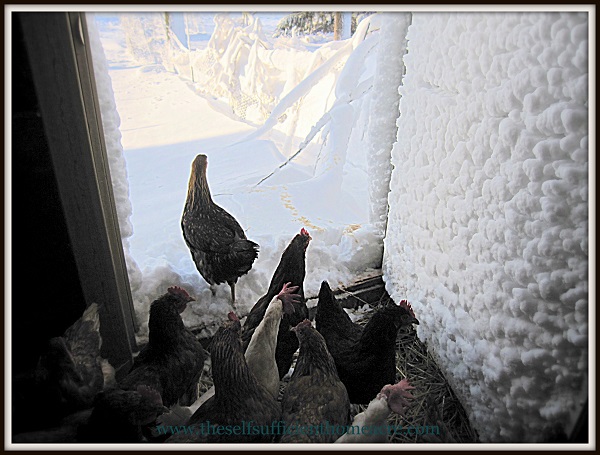

Properly fermented feed does not cause sour crop. You must be confusing fermenting yeast to make alcohol and Lacto Fermentation. These are very different actions with very different outcomes, but even starting with YEAST you are NOT creating Candidia Albicans or other sour crop inducing bacteria. People believe there is a link when a human drinks beer, they get a yeast infection but it is not yeast it is lowered immune. Anyway that is a little off topic.
So, Lacto-fermenting ENHANCES nutritive content of the feed it produces loads of B vitamins, vitamin K, and enzymes, the biggest and best benefit of fermentation is the introduction of probiotics, positive bacteria, into their food, making their crop inhospitable for “bad” bacteria like Candida’s that are a normal micro flora inside of a chickens crop, Candida albicans, C.tropicalis, C.glabrate, and C.krusei. Candida species that can overgrow and become a problem, exactly like a humans mouth and vagina when thrush & yeast infection that are prevented and healed with probiotics. There is a reason these bad bacteria’s overgrow, that is the use and especially over use of antibiotics or a lowered immune system stress, poor diet and other reasons. Lacto Fermentation is growing the opposite of yeast.
Hi Diane,
I think you misunderstood my article. I did not say that fermented feed causes sour crop. I said that overfeeding or giving sugary foods can cause unwanted fermentation of the feed in the crop… as in fermentation of bad bacteria or candida yeast. I hope this clears things up.
I am embarrassed
I may have clicked on the correct spot for a comment on the wrong article when I went to place my comment. I was looking for info on fermentation of chick food in place of the instant probiotic water packets , so I had so many tabs open. Later I was interested in the many blogs I found. If I can clarify where I made a mistake or just remove my comment altogether. I am sincere with my apologies.
Thank you. You were very fair to post a comment that was so far off the mark, I think you have integrity.
Hi Diane,
No worries! It is actually a question that might be helpful to others, so I wanted to leave it here in case anyone else found the article to be confusing. Best wishes with fermenting your chick feed! And thanks for stopping by to clarify!
Hi Diane.We will be getting 12 chickens next spring and live in central BC canada.just need to understand how to keep sour crop out of our chickens.Just building a very nice and insulated coop with good ventilation. Thank you for your info.Regards Peter
When performing the surgical procedure at home, what can I use to deaden the incision sight, and do I need to suture the incision?
Hi Roger,
I haven’t tried this but I have read that Biofreeze works and is safe for chickens as a topical analgesic (don’t use anything with lidocaine as it is not safe for them). Make the incision no more than 1-inch long and it will not need to be sutured… just be sure that the incision through the skin is slightly off to one side of the incision through the crop and sharpen that scalpel or knife really well to prevent tearing the tissue. I hope this helps… Lisa
Thank you. Kept chickens for three years now and never seen impacted or sour crop until now. This has really helped me diagnose and treat one of our flock, hopefully she’ll pull through now I know what to do
I’m sorry your hen is having a problem and I hope she gets better. I have had some hens that lived for a couple of years after having an impacted crop, so it can be treated. Best wishes.
Thanks for the information Lisa
You’re welcome!
Wow, I’m so glad I found your website. Thanks for the great info. I really appreciate it!
Thank you, Amy!